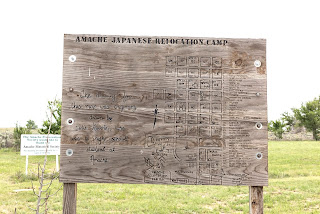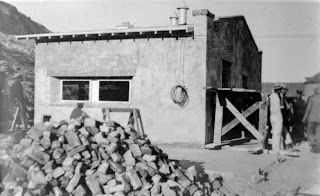It all started in Steamboat Springs, says the lore
"Carl Howelsen caught the attention of Barnum & Bailey directors in the summer of 1906 while soaring 60 feet into a pool of water from a 90-meter tower at a Chicago amusement park. In November 1906 he joined the circus, which billed him as "Captain" and the "Flying Norseman." Howelsen was paid $200 a week to "ski sail" down a Vaseline greased 100 foot slide, which was set at a 45 degree angle, and land on a platform 75 feet away and into the arms of two strong men waiting to check his flight. Sometimes he jumped over two elephants placed between the slide and platform," says information from Tread of the Pioneers Museum in Steamboat Springs.
"Carl Howelsen founded the first Winter Sports Club team, was responsible for introducing Winter Carnival to Steamboat Springs, built our first ski jump, set jumping records, and was instrumental in introducing ski jumping and recreational skiing to Colorado. He is in both the National and Colorado Ski Hall of Fame and resided in Steamboat Springs from 1913 to 1921."
Carl Howelsen immigrated to the United States when he was 28, loaded with honors because of his virtuosity as a skier.
While he was with Ringling Brothers’ Circus, he also helped organize the Norge Ski Club in Chicago. "However, circus life and improvised wood and canvas slides had no appeal for a man who longed for deep snow country but could not locate suitable terrain in Midwestern America. Around 1910, Howelsen reached Colorado and set out (on skis) to explore the Rocky Mountains. One trek took him to Hot Sulfur Springs where he stopped long enough to help stage what may have been the first ski tourney in Colorado. This was two miles north of Steamboat Springs and near the slopes that he believed should prove excellent for skiing," says information from the Hall of Fame.
"Tales concerning “that wild Swede” began circulating soon after snow arrived. It was reported that Howelsen had built a platform on a hillside, packed down the snow above and below it and with slats attached to his feet was hurtling through the air 60 to 70 feet. Thus ski jumping came to Steamboat, which later that winter, organized its first snow sports carnival under the expert supervision of the newly-arrived Norwegian. This beginning was followed in1915 with another jump on the much larger and steeper hill south of town that now bears the name Howelsen Hill."
Steamboat Springs, Colorado was dubbed “Ski Town, U.S.A,” in part, because of Howelsen's efforts.
"Carl Howelsen never again tracked Colorado snow after winning the national championship in 1921 which may have been his greatest regret. A desire to visit his parents took him back to Oslo. Although his intent was to return to Steamboat, he married and settled in his native country. Nevertheless, the Nowegian-American continued ski jumping until 1948. He also kept in touch with ski sport in this country: first through friends in Steamboat, then by greeting Colorado Olympians who invaded Norway for the Winter Games of 1952. The man who inspired countless Coloradans died in 1955 at age 78 but, wherever skiers congregate in North America, the fame of Carl Howelsen is a living memory."
Carl Howelsen was elected to the U.S. National Ski Hall of Fame in 1969.
Colorado Ski History Timeline
The Colorado ski industry was born in the area of Sulphur Springs and Steamboat Springs. Carl Howelson was a champion European ski jumper who had traveled to the Denver area to live. Howelson was a participant at many winter carnivals and this helped to spark local interest in the sport. It was reported that in early 1914, Howelson gave a ski jumping demonstration near Denver (At Inspiration Point) that attracted approximately 20,000 people.
1911 – On Dec. 31, 1911; Carl Howelson and Angell Schmidt participated in a ski jumping exhibition after the Hot Sulphur Springs Winter Carnival. Hot Sulphur Springs is located approximately 70 miles to the east of Steamboat Springs by road.
The first Sulphur Springs Winter Carnival took place on Dec. 30, 1911, and was put on by the Hot Sulpher Srings Winter Sports Club. Carl Howelson and Angel Schmidt arrived from Denver late in the evening on the 30. They built a ski jump behind John Peyer’s house the next day and proceeded to uphold their reputation as champion skiers.
1912 – The first Sulpher Springs carnival of the winter was successful enough to prompt a 3-day winter carnival in February of 1912 (Feb. 10-12). This carnival consisted of a sledding race, an amateur ski race, and a professional ski race – of which Carl Howelson was the winner with a time of 16 seconds. Howelson is also credited by many sources as having given an impressive ski jumping exhibition here in which he jumped 164 feet.
1913 – Carl Howelson wins 1st place at the second annual Hot Sulphur Springs Winter Carnival ski jumping competition. Howelson wins the competition with a jumping distance of 163 feet.
1914 – The Steamboat Springs Mid-Winter Carnival is planned for the days following the annual Sulphur Springs Winter Carnival. This allows Carl Howelson and others to travel from Denver to attend both events. Carl Howelson is put in charge of preparing the snow jumps for the competition.
1914 – The ski jump for the 1915 Steamboat Springs Winter Carnival was constructed in an area that was called Elk Park. This hill would later become known as Howelson Hill (Renamed in 1917).
Post-WWI Colorado Ski History
1936 – Loveland Ski Area is opened by J.C Blickensderfer.
1938 – The first rope tow is installed near the top of Wolf Creek Pass.
1939 – The Monarch Ski Area is opened for skiing by the Town of Salida.
1940 – Winter Park Ski Resort Opens. This ski area officially opened for the first time during the 1939-1940 ski season. Prior to this; skiers were already traveling to the area via train to ski.
1942 – Camp Hale is constructed (Later Ski Cooper). Camp Hale was initially used as a training site for the 10th Mountain Division. This camp was built during the summer of 1942.
1945 – Friedl Pfeifer and Walter Paepcke form the Aspen Ski Company.
1946 – Arapahoe Basin Opens. This ski area was formed by Larry Jump, Sandy Schauffler, Dick Durrance, and Max Dercum. The mountain first opened for the ski season of 1946-1947, but the official dedication did not take place until Feb. 15, 1948.
1946 – Aspen Mountain (Ajax) Opens; owned and operated by the newly formed Aspen Ski Company.
1951 – The Berry Family acquires the Monarch Ski Area.
1955 – Wolf Creek Ski Area moves to its current location from the top of Wolf Creek Pass.
1957 – Earl Eaton and Pete Seibert purchase 500 acres of land at the base of what would later become the Vail Ski Resort.
1958 – Friedl Pfeifer opens the Buttermilk ski area as President of the Buttermilk Skiing Corporation.
1959 – Aspen Highlands is opened by Whipple Jones.
1959 – Pete Seibert forms the Vail Corporation and begins planning development of the Vail Ski Resort.
1958 – Construction begins on the Steamboat Ski resort.
1961 – Breckenridge Opens. This resort opened as the Peak 8 Ski Area in 1961. The new area was built by The Summit County Development Corporation.
1961 – Crested Butte Opens. The Crested Butte ski resort opened for skiing on Thanksgiving Day, 1961.
1962 – Vail Ski Resort opens for skiing on December 15, 1962.
1963 – Snowcat tours begin on what would become the Snowmass Ski Area.
1963 – Steamboat Ski Resort Opens. The Steamboat Ski Resort opens for skiing on January 12th, 1963.
1963 – The Aspen Ski Corporation acquires Buttermilk.
1966 – The Powderhorn Ski Area opens on Thanksgiving Day in 1966.
1967 – Snowmass Ski Area is opened for skiing by Bill Janss.
1970 – Keystone Ski Resort is opened for skiing on November 21, 1970.
1971 – Construction begins on Copper Mountain.
1972 – Telluride Ski Resort opens for skiing. This resort was largely a project of Joseph Zoline and Emile Allais.
1972 – Copper Mountain opens for skiing on November 15, 1972.
1973 – The Eisenhower Memorial Tunnel opens to travelers.
1972 – Colorado rejects the winning bid for the 1976 Winter Olympics.
1976 – The Colorado Ski Museum is founded in Vail, Colorado.
1977 – Ground breaking ceremony for the Beaver Creek Ski Resort is held on July 28, 1977.
1980 – Beaver Creek Ski Resort Opens.






































